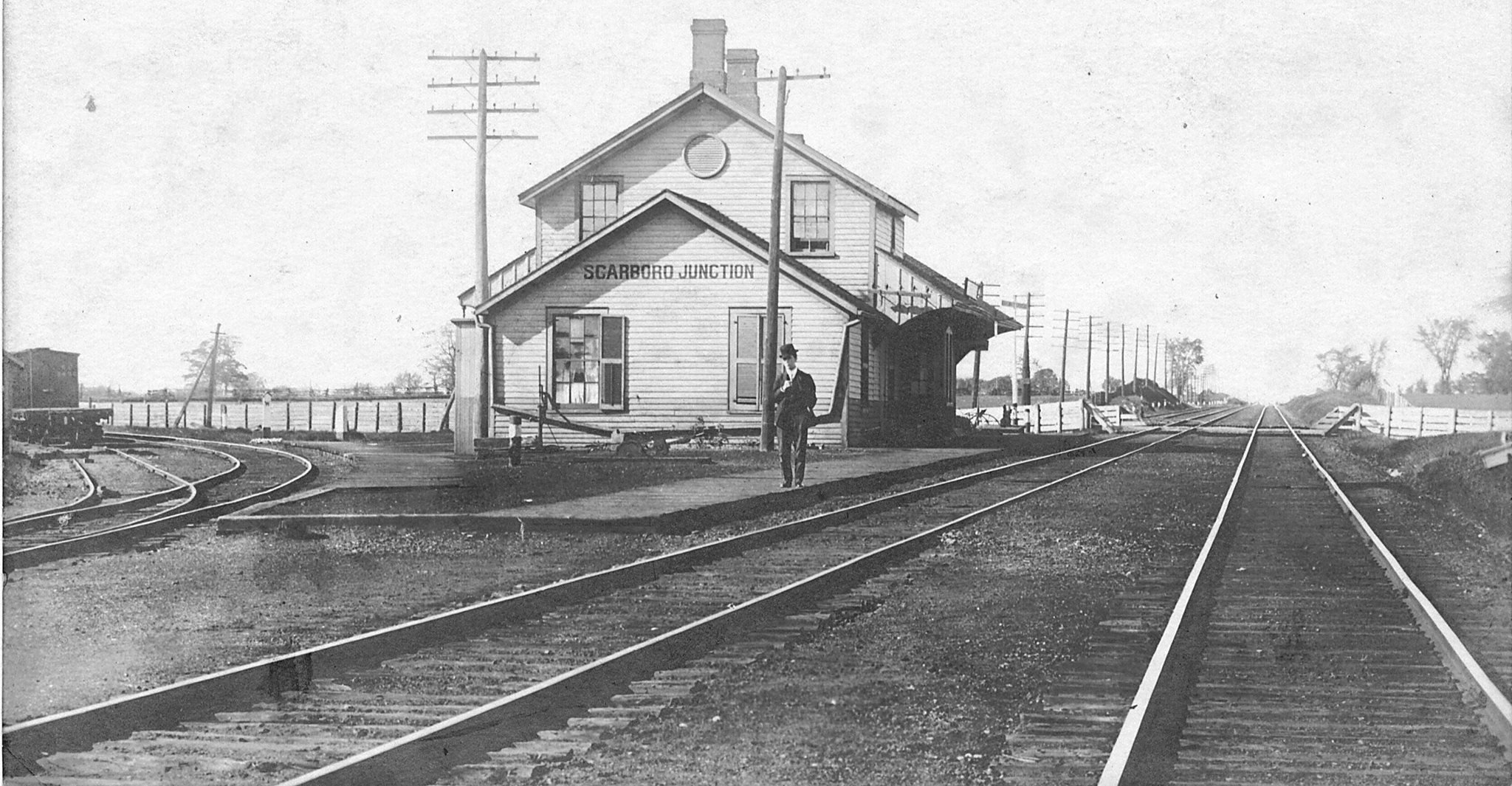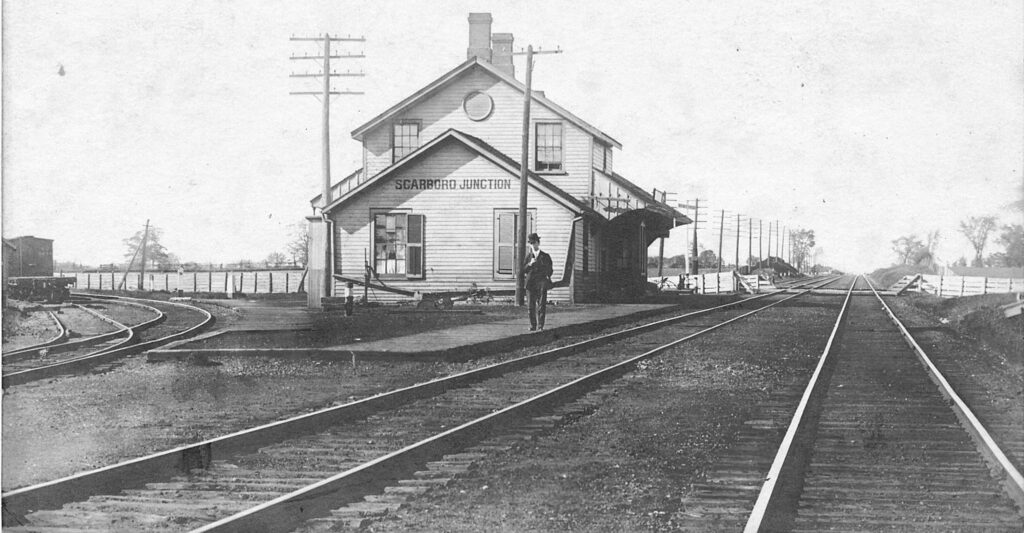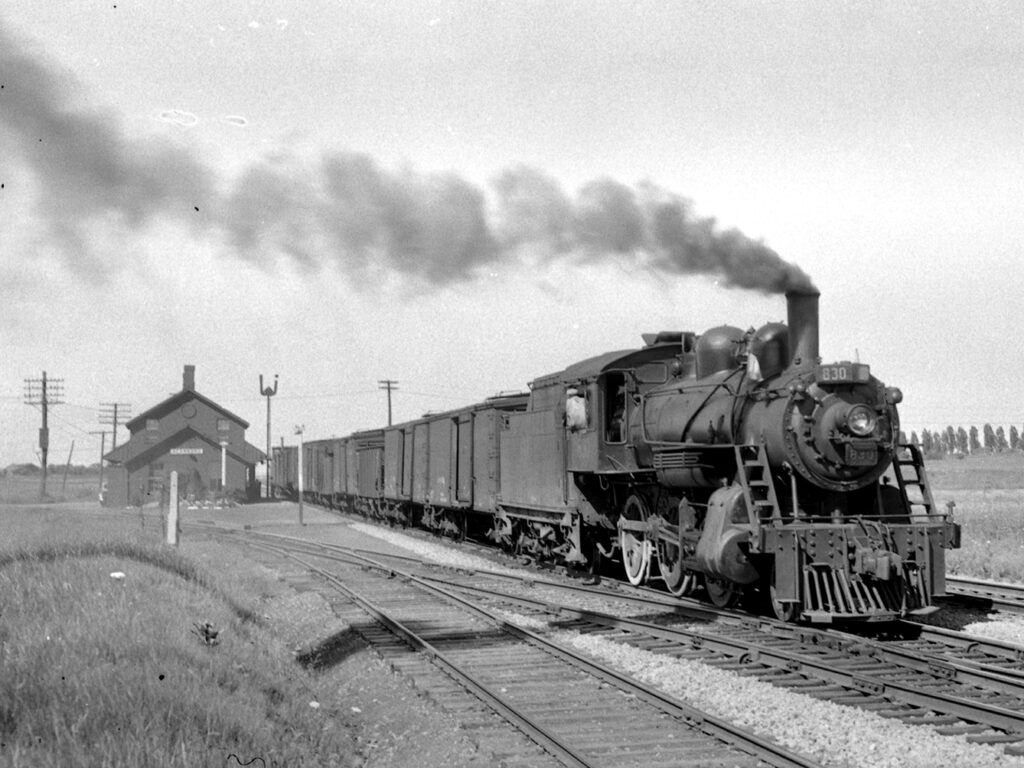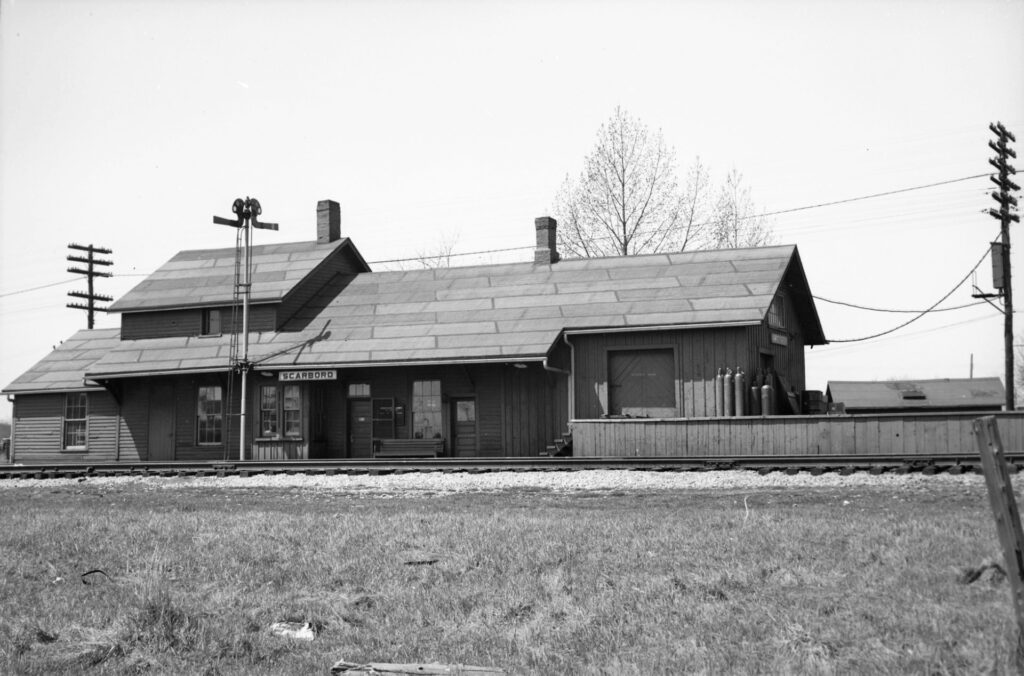Summary
Scarborough Station was built by the Grand Trunk Railway in 1856 while the railway was being constructed between Toronto and Montreal. Scarborough at that time was a small community of less than 100 people centered around the intersection of Markham Road and Eglinton Avenue, and the station was located just north of there adjacent to Markham Road. While no photos of this station are known to exist, it was most likely a rectangular structure with either red brick or grey limestone exterior walls and a pitched roof with up to four chimneys. Surviving examples of this design can still be found in Port Hope, Napanee and Ernestown. The first passenger train arrived at Scarborough on August 11th, 1856, though regular service between Toronto and Montreal did not commence until October 27th of that year. A total of four trains stopped at Scarborough Station per day by the time of Canada’s confederation in 1867 – increasing to five by 1869.
After the formation of the narrow-gauge Toronto & Nipissing Railway in 1868, the two railroads decided it would be best to share the existing Grand Trunk line from Toronto to a point approximately three miles west of Scarborough Village. This was achieved by the addition of a third rail over that entire distance. The Toronto & Nipissing tracks would curve north on their own right-of-way near present-day Midland Avenue. To facilitate interchange of passengers between both railroads, a new station was built at the junction in 1871. This also involved the abandonment of the earlier station at Scarborough Village. The new station, called Scarborough Junction, was significantly larger in size than its predecessor but was made from comparatively inexpensive wood instead of limestone or brick. The first Toronto & Nipissing trains arrived at Scarborough Junction on July 13th, 1871, originally offering one departure in each direction per day. The Toronto World newspaper reported in March of 1882 that Scarborough Station was “rebuilt”, though the extent of these modifications is unknown. A second storey was located above the passenger waiting room but it’s also unknown what that space was used for – possibly living accommodations for the station agent.
In October 1873, the Grand Trunk became the first of the two railways at Scarborough Junction to adopt standard gauge. The Toronto & Nipissing was merged into the Midland Railway of Canada in 1882 and its gauge was also converted to standard. An opportunistic Grand Trunk Railway acquired the Midland Railway just two years later in 1884. Simultaneously, the Grand Trunk had been attempting to double track their mainline between Toronto and Montreal. The second track was laid through Scarborough between 1889 and 1892. Being located at the convergence of an important mainline and a rural branch line, Scarborough Junction became an especially busy place during the early 20th Century. By the early 1920’s, four passenger trains stopped at Scarborough each day on the mainline, and an additional nine stopped on the former Toronto & Nipissing. The vast majority of trains on the mainline passed through without stopping. This frequency of trains would mostly continue after the financially-distressed Grand Trunk was merged into Canadian National in 1923, and combined with the unique location would make it a popular train-watching spot for locals. At some point in the 20th century the building was extended with a freight room on the east side. Interestingly, the extension was given a board-and-batten exterior while the rest of the building had siding.
Tragically, the Scarborough Station was heavily damaged by a fire in December of 1960, after which the burned-out remnants were dismantled and cleared away. A CN boxcar was used as a temporary replacement until a proper station could be built, and the Scarborough GO station opened a half kilometer to the west in 1967 with the commencement of provincially-operated GO Transit. GO took over service from VIA Rail on the former Toronto & Nipissing line, now the GO Transit Stouffville Line, in 1982.
Condensed Station Info:
| Location: | Served By: | Current State: | Date Built: | Date Demolished/Burned: |
| North of St. Clair Avenue and Midland Avenue | GTR (1856 – 1923) T&N (1871 – 1882) MRC (1882 – 1884) CNR (1923 – 1960) | Demolished | 1856 (First) 1871 (Second) | 1871 (First) 1960 (Second) |






